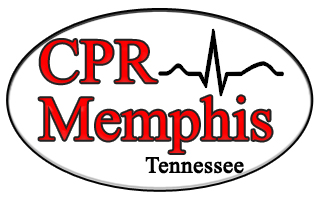- I. Introduction
In society it is important to understand the significance and identification of microorganisms. In healthcare it is essential to know what agent is causing a disease or reaction in order for a treatment to affectively alleviate from the source. The purpose of this lab was to separate and identify two different species of unknown bacterium by applying all methods that were previously practiced in the laboratory.
- II. Materials and Methods
The instructor provided an unknown test tube labeled #124. It appeared slightly turbid upon shaking. The goal was to determine two separate unknown bacterium, one Gram positive and one Gram negative. All procedures were followed as stated in the course Lab Manual (1). Proper aseptic techniques were used in order to preserve the integrity of the cultures and insure the validity of the test’s outcome. The mixed culture was first streaked across a nutrient agar plate in order to segregate the two colonies from each other. The quadrant streak method depicted in the lab manual was used. After incubation at 37.0 degrees Celsius, the cultured plate appeared to have growth two separate species. The next course of action was to use the Gram staining in attempt to differentiate the individual bacterium. Following Gram staining specific biochemical tests were performed in order to advance investigation of the two definite bacterial cultures. These procedures were chosen from the unknown identification tables that were in the lab manual. The specific media and reagents used for each test are in Table 1.
Table 1. Reagents and Media Used For Each |
||
Tests |
Media |
Reagents |
|
Gram Stain |
Nutrient Agar |
Crystal Violet, Gram Iodine, Gram Decolorizer, Safranin Red |
|
Simmons Citrate |
Simmons Citrate Agar Slant |
|
|
Methyl Red |
Nutrient Broth |
Methyl Red |
|
Voges Proskauer |
Nutrient Broth |
VP Reagent A and VP Reagent B |
|
Indole |
SIM tube |
Indole Reagent |
|
Maltose Fermintation |
Maltose, Peptone, and Phenol Red |
|
|
Nitrate Reduction |
Nutrient Broth |
Nitrate Reagent A and Reagent B, powdered Zinc |
|
Urea |
Urea Broth and Phenol Red |
|
|
Lactose |
Eosin Methylene Blue Agar |
|
|
Casein |
Milk Agar |
|
- III. Results
| Table 2. Test Results for Bacteria A. | ||
Test |
Observation |
Result |
| Methyl Red | Broth turned Red | Produced acid from glucose metabolism |
| Voges Proskauer (V-P) | Broth turned Pink | Produced acetyl methyl carbinol |
| Casein | Plate had clear zone | Produced casease which hydrolyzed casein |
| Maltose | Media turned yellow | Does ferment maltose |
| Gram Stain | Purple rods | Gram Postive |
| Table 3. Test Results for Bacteria B. | ||
| Test | Observation | Result |
| Nitrate Reduction | No color change after Reagent A | |
& B. Turned red after adding
zincCannot reduce nitratesSimmonsMedia remained greenCannot use citrate as sole source of carbonH2SNo color changeNo sulfur reductionUreaBroth remained yellowCannot hydrolyze ammoniaLactose (EMB)Media turned metallic greenStrong acid production / lactose positiveIndoleMedia immediately turned redHas the enzyme tryptophanaseGram StainRed rodsGram Negative
Unknown #124 was received and then initially streaked. Colonies were successfully obtained from two different species by identifying color differences. Strain A was opaque and slightly yellow. Strain B was cloudy was slightly white. To further delineate a pure colony, Gram staining was completed. Strain A was determined to be a positive rod and Strain B was determined to be a negative rod. After obtaining pure colonies of each strain, numerous tests were completed to acquire the identity of the two unknown strains. Tests and Results are listed in Table 2 and 3. The flow charts indicate the process used to narrow down the possibilities and finally arriving at Escherichia coli and Bacillus cereus.
IV. Discussion / Conclusion
After identifying Strain A as Gram positive rods its identity was narrowed down to Bacillus cereus and Bacillus subtilis. The first test completed to differentiate between the two choices was Methyl Red. The positive result obtained indicated that the unknown bacterium was Bacillus cereus. Other tests were completed to confirm this. Positive results were observed for Maltose fermentation, Oxidase, and Casein tests. These results confirmed the identity of Strain A as Bacillus cereus.
To identify Strain B multiple tests were done to systematically narrow down the choices for its identity. Strain B was shown to be Gram negative rods, which does not eliminate any of the choices. The first test completed was for sulfur reduction. The negative result eliminates Proteus vulgaris as a possibility. The negative result of the Urea test allowed Klebsiella pneumoniae to be eliminated. The EMB test was used to study lactose fermentation. The positive result indicates that Escherichia coli and Enterobacter aerogenes are the remaining two possibilities for the identity of Strain B. The indole test was used to differentiate between the final two choices. The positive result indicates that Strain B is Escherichia coli. This was further confirmed by negative results for Simmon’s Citrate and Nitrate test.
E. coli bacteria are found within the gastrointestinal tract of humans and animals. Within this environment E. coli is non-pathogenic and is in fact necessary for healthy functioning of the G.I. system (2). However, other variants of this Gram negative rod shaped bacteria are pathogenic and cause many deleterious conditions including diarrhea, urinary tract infections, and respiratory illnesses such as pneumonia (2). One mechanism by which E. coli is pathogenic is the inactivation of the 60s ribosomal subunit by Shiga-like toxin that is produced by the O157:H7 strain of E. coli (3). Pathogenic E. coli can be transmitted through contaminated food, water, and direct contact with contaminated humans or animals (2). E. coli can be used by microbiologists as a marker for water contamination, where non-pathogenic E. coli appears in the drinking water when conditions are favorable for another type of pathogenic contamination (2)
V. Reference List
1. McDonald, V., Thoele, M., Salsgiver, B., and Gero, S. 2011. Lab Manual for General Microbiology Bio 203. St. Louis: St. Louis Community College at Meramec.
2. Centers for Disease Control and Prevention; http://www.cdc.gov, Page last updated August 3, 2012.
3. Microbe Wiki, Edited by Nicole Jacques and Nancy Ngo, students of M. Glogowski, Loyola University Chicago; http://microbewiki.kenyon.edu/index.php/Escherichia_coli





